There’s a lake at the heart of Georgia’s landscape where you can battle Bass and enjoy a real thrill of the chase. At the same time, you can come and spend a relaxing day on the water with friends and family. A Lake Lanier fishing adventure is a perfect mix of both.

The Lanier is one of the most intricate lakes in the southeast. This man-made reservoir is a celebrated spot for a selection of game species. Mastering its waters isn’t the easiest task, due to the lake’s mix of deep and shallow areas, underwater structures, and over 600 miles of winding shoreline.
That’s why we’ve put together this guide. In it, you’ll learn everything you need to go fishing in Lake Lanier. We’ll talk about what you can catch, where to do it, when, and much more. If you’re ready, let’s dive right in.
Top Lake Lanier Fish Species
So, what can you catch while fishing in Lake Lanier? The answer is: anything from Crappie, Trout, Walleye, Bluegill, and Carp, to Gar, various Catfish, Panfish, and, of course, Bass.
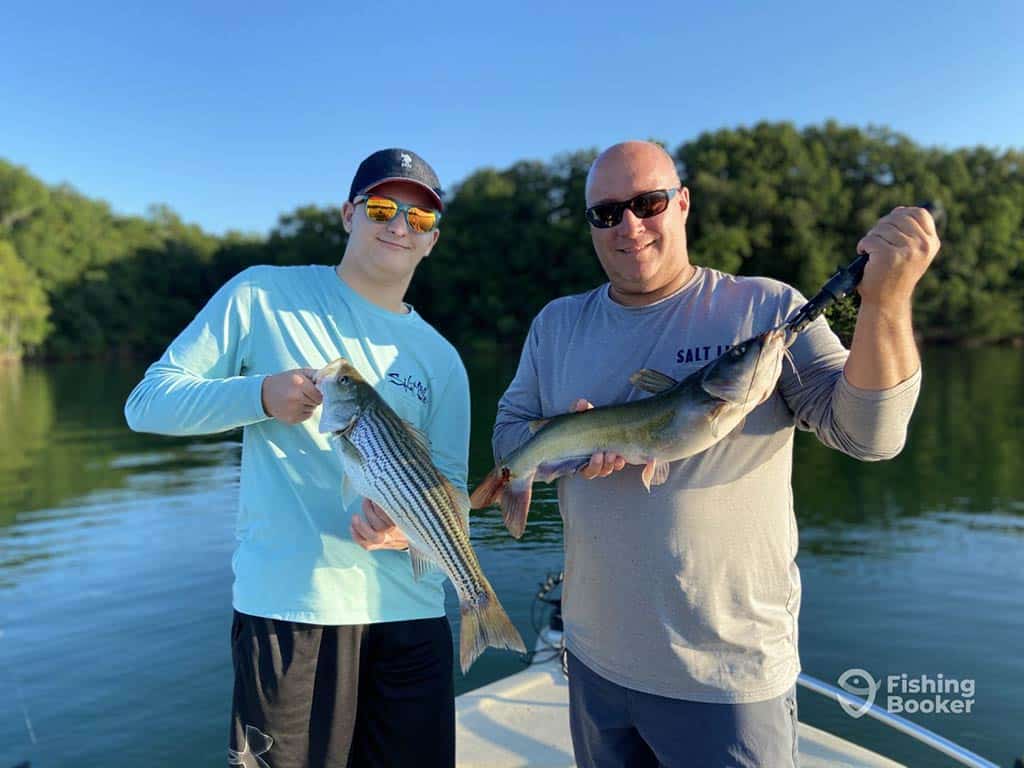
Bass fishing in Lake Lanier is a real angler’s delight. Why? Well, you can get your hands on not one, but several species of Bass. Largemouth, Striped, and Spotted! If you manage to land all three in a single day, you can earn something called a “Lake Lanier Slam,” which should be on every angler’s bucket list.
Let’s talk about the Lake Lanier Slam in more detail, in addition to a few other exciting species you can target…
Largemouth Bass
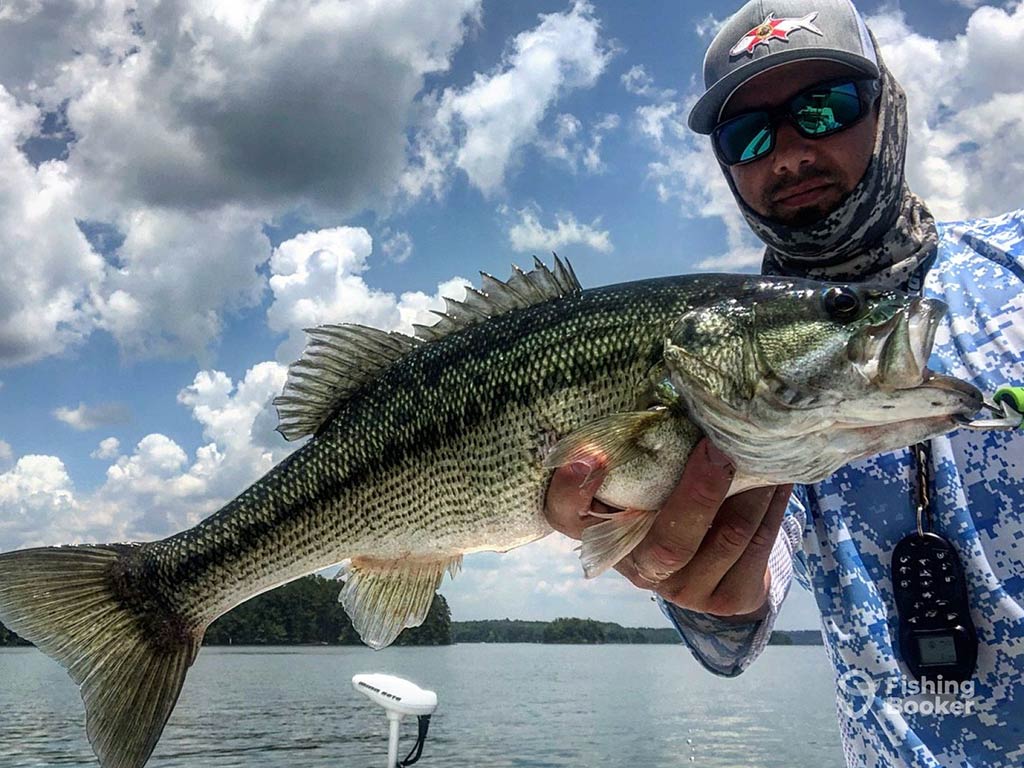
Largemouth Bass are the absolute crown jewels for Lake Lanier anglers. Praised for their fighting abilities, these predators can also reach pretty impressive sizes. They’re a joy to reel in, if you know the right technique, of course.
Perhaps the best thing about Largemouth Bass fishing here is that it’s possible year-round, particularly during their pre-spawn period in the spring. Largies love all sorts of structure, so you can look for them around docks, fallen trees, and vegetation.
Striped Bass

Striped Bass – or “Stripers,” as anglers love to call them – are another Lake Lanier superstar catch. They’re exceptionally powerful swimmers, known for their ferocious strikes. Once hooked, Stripers will definitely put on a fight.
Local anglers head to the lake during early morning or late evening, equipped with all sorts of live bait and lures. Striped Bass typically hang out in deeper waters during the hot summer months and come closer to the surface during cooler periods of the year.
Spotted Bass
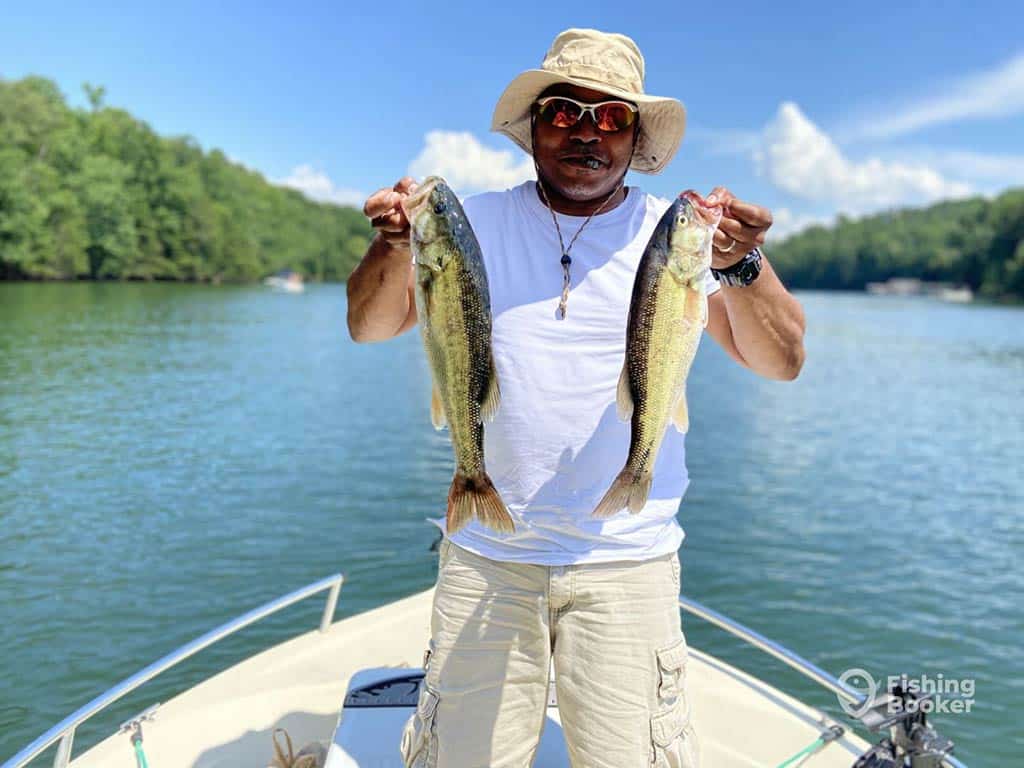
Don’t get confused. Spotted Bass aren’t actually cousins of the Largemouth variety. In fact, they’re their feisty competitors, luring anglers with their aggressive nature. While they’re smaller than Largemouth Bass, these fighters make up for it by challenging every angler’s strength.
Similarly to other predators, Spotted Bass respond well to live bait and a range of artificial lures. Lake Lanier anglers typically look for them near steep drop-offs and rocky areas, although there are various honey holes that only local guides know about.
Crappie
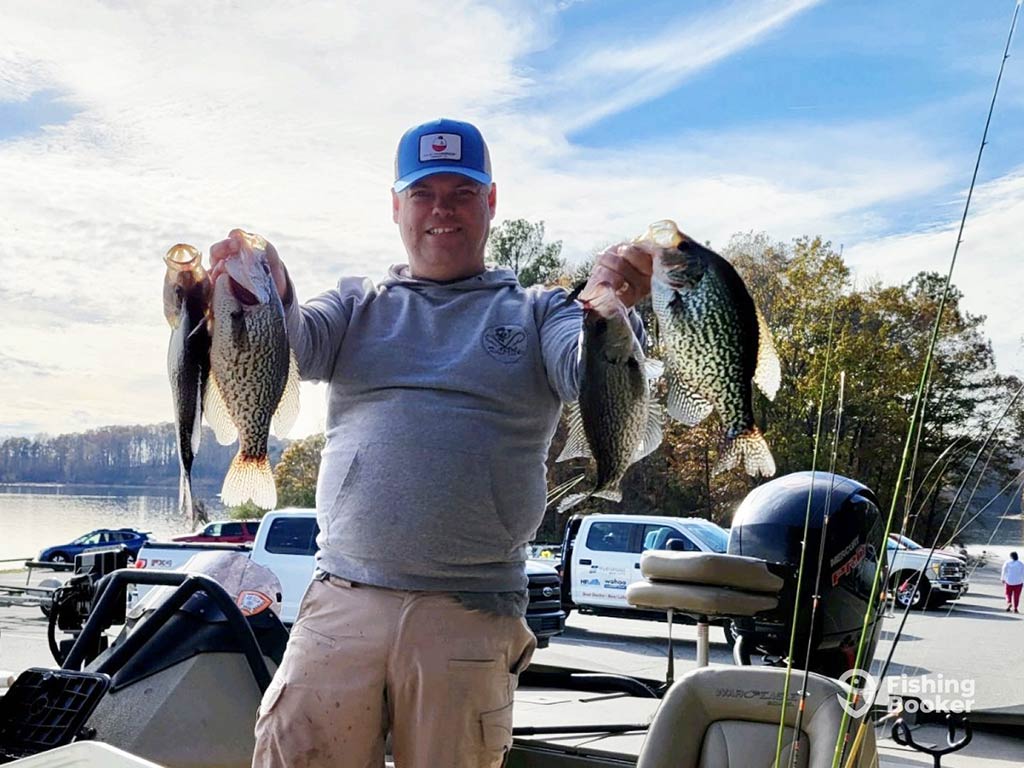
The Lake Lanier Slam isn’t the only show in town. Crappie is a beginner-friendly species, especially popular among younger anglers and kids. These fish are a pleasure to catch, especially when the bite rate is high. Plus, they’re pretty tasty!
Crappie are most active in the winter and early spring. You can find them in shallow areas of the lake in April. As the weather warms, Crappie retreat to deeper areas and structures, making the challenge of precision casting more fun for more experienced anglers.
Bluegill
Bluegill fishing in Lake Lanier often gets overlooked. This humble species is actually fun to catch, however, especially if you’re fishing with kids. You don’t really need to do much. Bluegill simply adore taking baits like worms, crickets, and small lures.
For a relaxing day of fishing for these fish, head to areas with a lot of structure. Local anglers usually fish for Bluegill around docks, reeds, and rocks, as well as near the shoreline.
Top Lake Lanier Fishing Spots
Fishing in Lake Lanier offers something for everyone, with different areas that harbor various species. The lake is split into two sections – north and south. The first is relatively shallow, so it’s more susceptible to weather changes. The southern part, however, is much deeper.
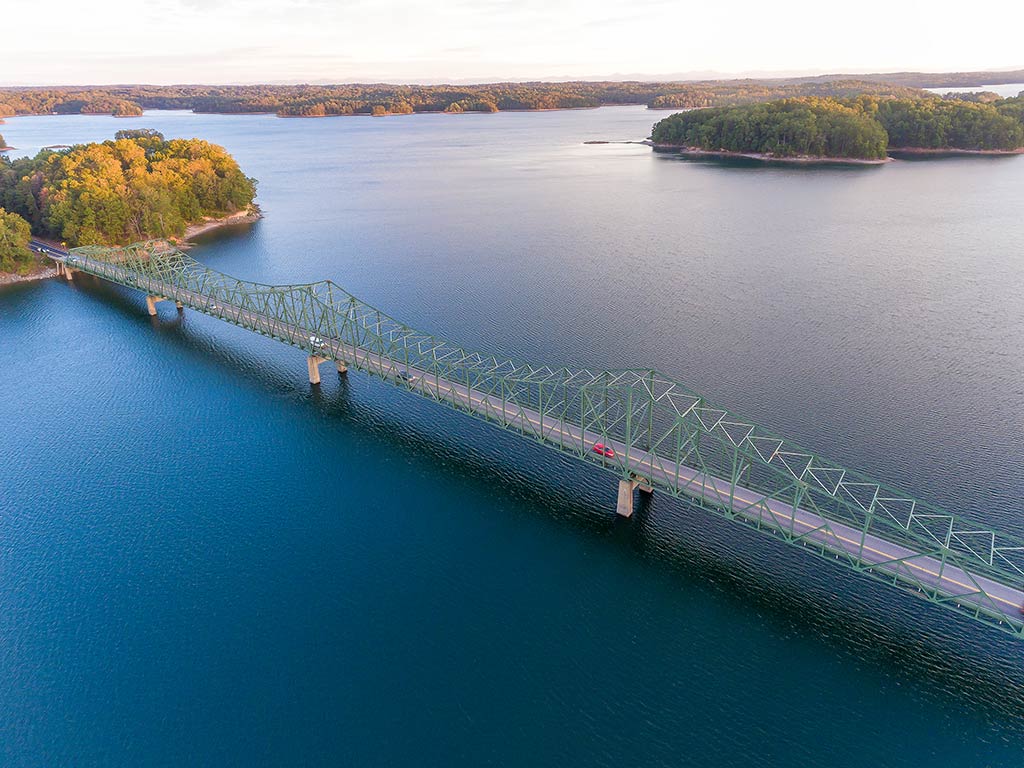
It goes without saying that simply knowing these areas won’t guarantee a successful catch. A recipe for a productive Lake Lanier fishing trip includes a deep understanding of the lake’s dynamics. Naturally, this is something only an experienced guide can provide.
Luckily, there are plenty of seasoned captains that share their knowledge (and GPS coordinates) with their anglers. The value of fishing with someone who’s mastered Lake Lanier can’t be overestimated. But that shouldn’t stop you from finding out more about some of the more productive spots to cast a line in…
- Bald Ridge Creek. This is a perfect spot on the southeast side of the lake that offers plenty of Bass and Crappie fishing action. There are various docks in the creek, offering access to deeper waters.
- Browns Bridge. Spotted Bass anglers love Browns Bridge for its deep, clear waters and rocky terrain. This spot is good for you to cast a line in the summer months, as the Bass migrate en-masse to deeper waters.
- Flat Creek. Anglers fishing with their families can head to the creek to look for Crappie. There are brush piles and docks that provide good structure for these fish during the cooler periods.
- Six Mile Creek. This area is perfect for sight fishing thanks to the creek’s clear waters. Six Mile is known for its abundance of submerged timber, which, in turn, is a haven for Largemouth Bass.
- Flowery Branch. This is another great Striped Bass spot, particularly during the summer months. Flowery Branch has deeper waters with a multitude of bait fish that Stripers feed on.
- Laurel Park. Shore fishermen can reel in Bluegill and Bass in the park when the conditions allow. There are also picnic areas for families, along with a fishing jetty.
Lake Lanier Fishing Seasons
Trophy-sized Bass are common from February to April. During this time, anglers often report pretty impressive catches. Don’t worry about missing out, though. You can find smaller Spotted and Striped Bass throughout the year.

In the summer heat, Lake Lanier Crappie move to the depths, which requires more precision and skill to make the right cast. However, this is also the time when you’ll find a variety of other species in the shallows.
Come fall, and anglers switch their attention to topwater fishing as the fish return to the surface areas. Finally, the winter season is mostly about Crappie action, making it the most productive time for targeting these delicious fish.
Lake Lanier Fishing Techniques
The next question is, how can you go fishing in Lake Lanier? Well, in this fishery you can use a plethora of fishing methods to outsmart Bass or whatever else your target may be. For instance, in the shallower north, anglers usually use topwater lures. They then switch to live bait when working the cooler depths in the southern end of the lake.
The key to success, though, lies not only in knowing the right technique but also in understanding each species. That’s something a skilled guide can help you with. But to find out what to expect on your Lake Lanier fishing adventure from the technical point of view, read on.
Spinning and Baitcasting for Bass
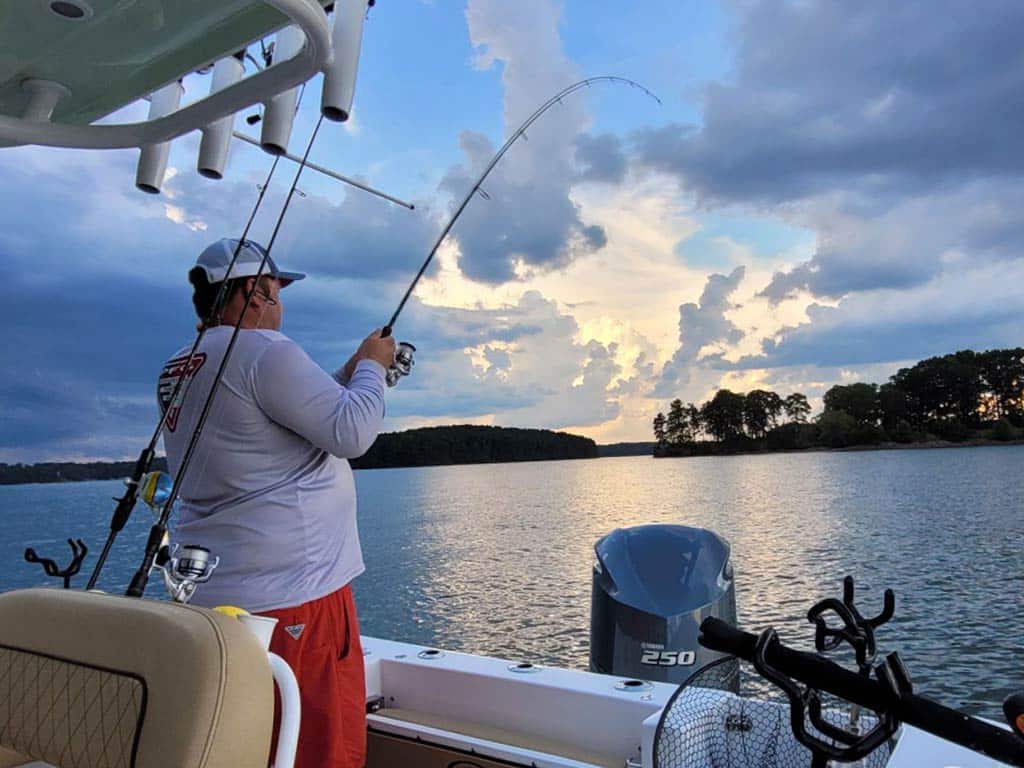
Spinning and baitcasting are arguably the most used and versatile techniques for Bass fishing on Lake Lanier. Locals typically cast their lures during early mornings or late evenings. These are the golden hours for Bass fishing when the fish are more active.
Such techniques require a light to medium-action rod paired with braided or monofilament lines of around 12 pounds test. This setup offers a delicate balance between strength and sensitivity, which is a must when fishing for Bass. As for the lures, topwater plugs, spinnerbaits, and crankbaits are among the most common choices on Lake Lanier.
Trolling for Striped Bass
Boat anglers typically target Stripers by trolling. That means moving slowly across the water with a bait or lure – or multiple – trailing behind the boat. Depending on personal preferences, anglers often use downriggers or other heavy weights to get the bait to the right depth.
When you’re trolling for Striped Bass during the summer months, you’re working the cooler, deeper waters. The best approach is to use live bait, such as herring or shad, or artificial lures like swimbaits to get the fish to bite.
Fly Fishing for Bass
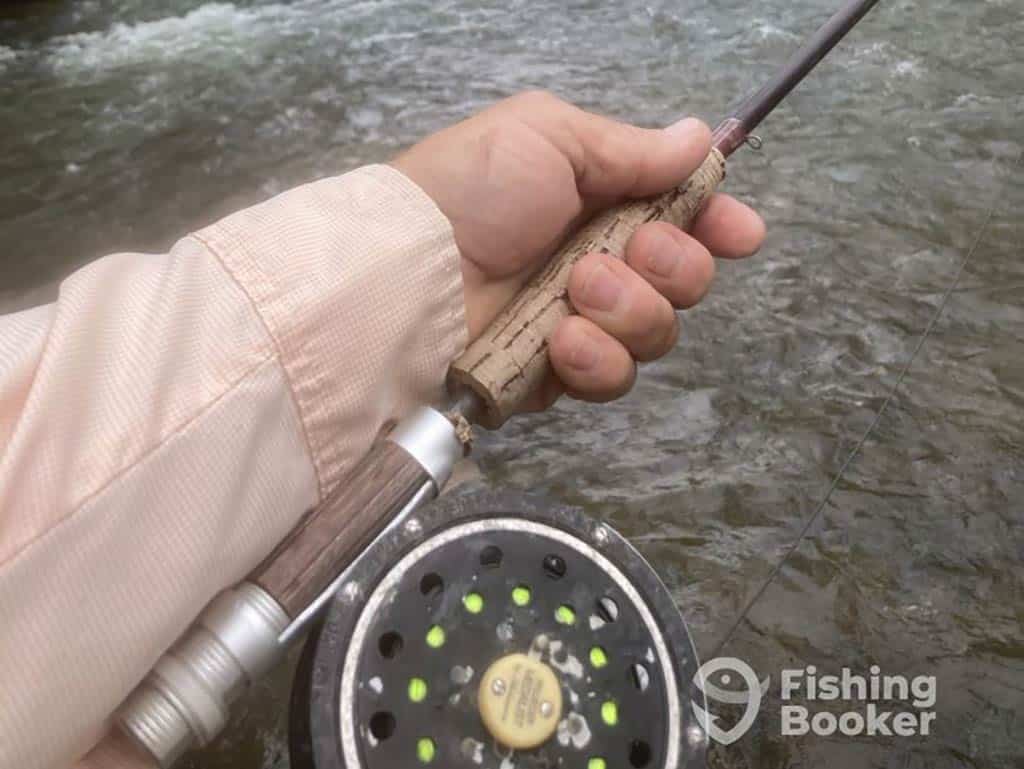
Lake Lanier Bass fishing is challenging enough, but fly fishing makes it even more unique. Anglers typically cast their flies near docks and structures that dot the lake’s shoreline. But you can also explore other places throughout the lake.
A good fly fishing setup is a 7–8 wt fly rod with an intermediate or sinking line. Bass prefer praying on shad, so consider picking streamers that mimic these bait fish.
Jigging for Crappie

When done right, jigging can be a highly rewarding technique to land Crappie. As they congregate around submerged structure and brush piles, you can target them with soft plastic jigs and live minnows, whichever you prefer.
When it comes to the best setup, consider picking light spinning rods with 4–8 lb test lines. This gear works best when Crappie move to shallow waters to spawn.
Bottom Fishing for Catfish
There are various types of Catfish that patrol the waters of Lake Lanier. Since these fish are bottom dwellers, bottom fishing often comes into play. This technique involves dropping a simple baited rig to the lake’s bottom, and waiting for the target to bite.
Catfish are known for their nocturnal nature, which means that night is perhaps the best time to target them. Equip yourself with a medium-heavy rod with a line strength of around 20 pounds of test. Your choice of bait depends on the exact species, but specially formulated “stink baits” are popular choices among local anglers.
Lake Lanier Fishing Rules and Regulations

Before you head out on your Lake Lanier fishing excursion, make sure to go through local rules and regulations. For example, anglers aged 16 and over need to have a valid Georgia license.
You can buy your license and permits online, by calling 800-366-2661, or at any WRD or CRD office. You can also find them at major retailers like Walmart, state parks, and any hardware or bait and tackle store.
Since fishing on Lake Lanier is a year-round pleasure, you can catch and release all species at any time. If you decide to keep your catch, there are certain size and bag limits that you need to check ahead of time. But don’t worry, the Georgia DNR has all the info you need.
Fishing in Lake Lanier FAQs
Lake Lanier: An Adventure That Stirs the Soul
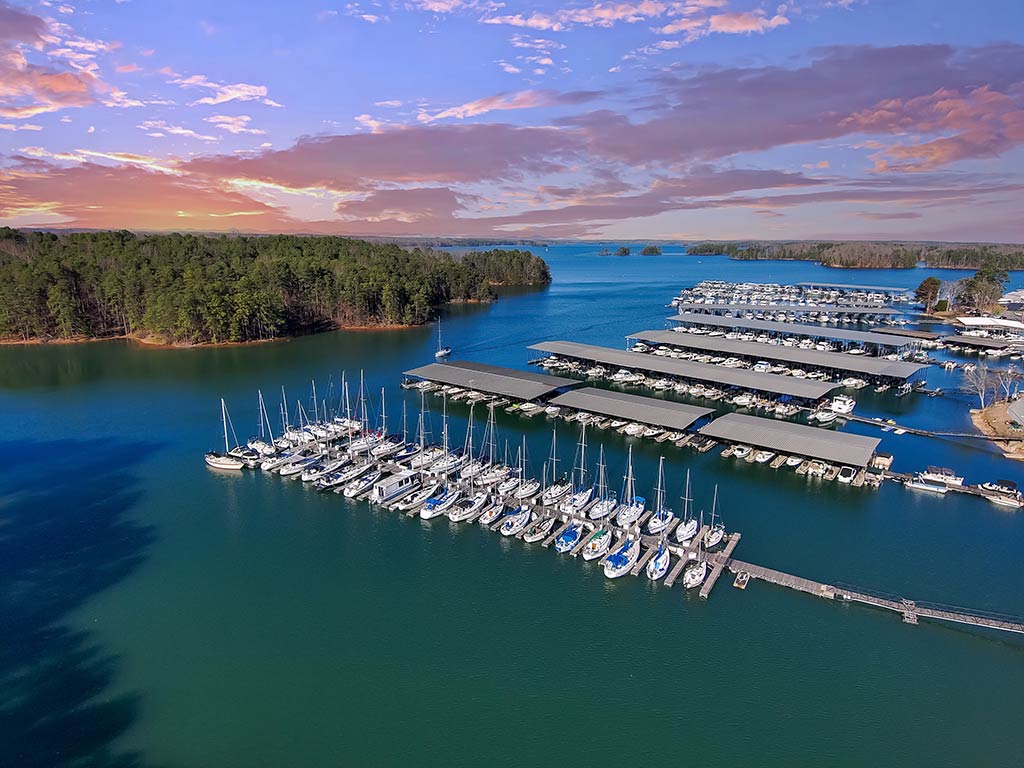
Fishing in Lake Lanier is more than just a day on the water. Some call it healing, while others say that it’s the best way to explore the heart of the state. Plus, it’s one of the best spots in Georgia to fish for Bass. All in all, Lake Lanier is a destination that promises an unforgettable angling experience for everyone. You don’t need to take our word for it, though. Head out and feel it yourself!
What do you think about Lake Lanier’s fishing opportunities? Have you ever fished here? Was it Bass or Crappie that made you fall in love with the lake? Tell us in the comments below!
The post Lake Lanier Fishing: The Complete Guide appeared first on FishingBooker Blog.
https://ift.tt/QBMngqs
0 Comments
Enregistrer un commentaire